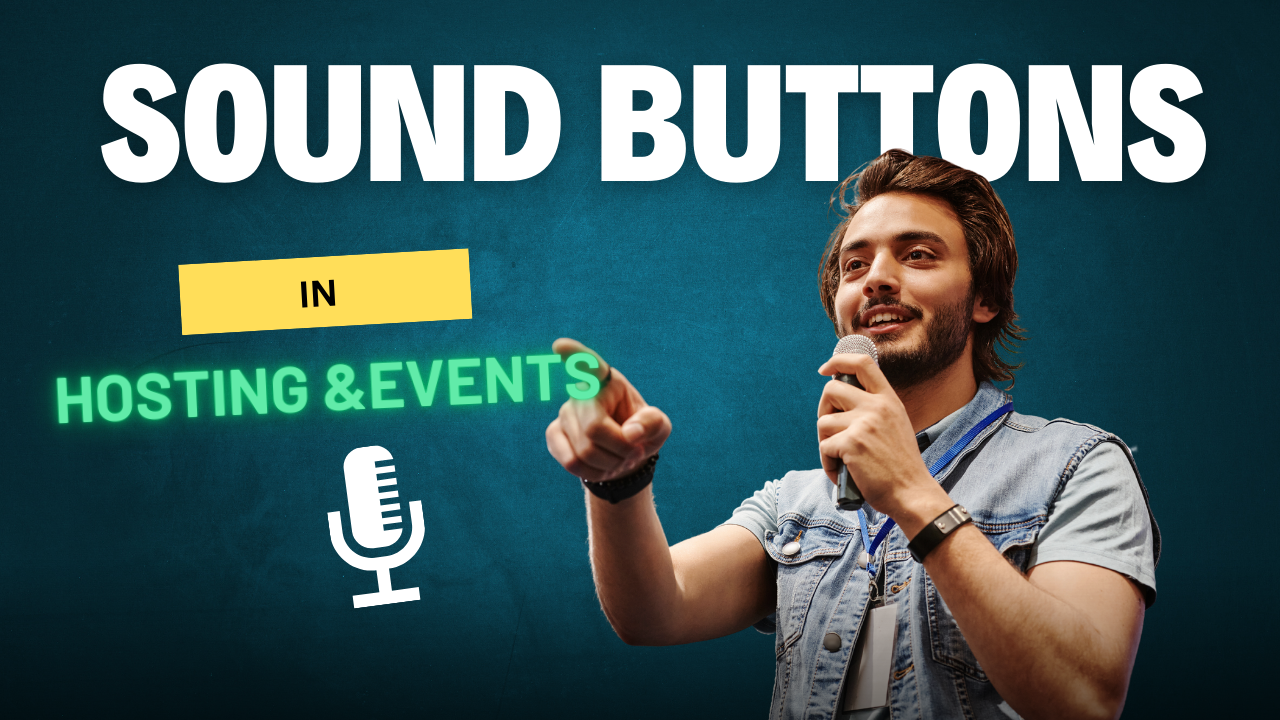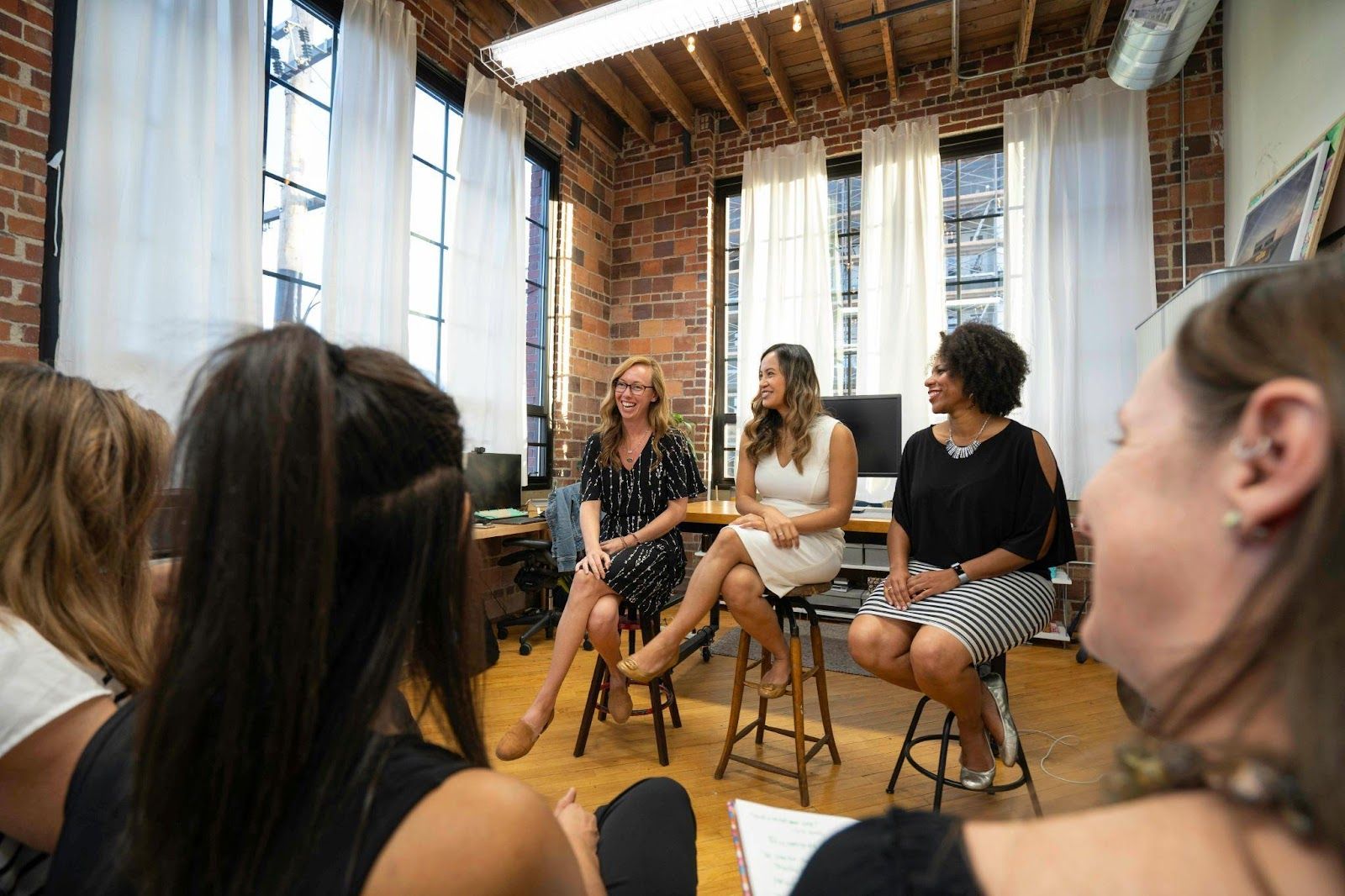How Sound Buttons Are Revolutionizing Event Hosting and Presentations
From frictionless hosting and engaging multiscreen ideas to intelligent QundefinedA, cheque-in, and event data analytics, manage your event like a pro with these advancements. Demands of modern audiences consist of engaging, interactive, and entertaining experiences. One mechanism that has unexpectedly but tremendously aided in this evolution is the sound button. These basic but effective tools are transforming how hosts, presenters, and entertainers communicate with their audiences. Be for corporate events, educational seminars, or even live shows, sound buttons are carving their place as a crucial component to ensure that the audience is energized, and the message stays with them.

What Are Sound Buttons?
From playing silly sound effects at the push of a button to customized messages at grandpa's birthday party, sound buttons have become a digital tool or physical button that can simply play sound effects or pre-programmed audio clips. These sounds can range from:
Applause or cheers
Dramatic drum rolls
Comedic sound bites
Alert sounds
Short voice clips
These buttons are found on mobile apps, computer software, and physical soundboards. Also popular Myinstants and Soundboard. Sound buttons are soooo easy to get access to thanks to sites like ours.
How Sound Buttons Are Used in Event Hosting :
Sound buttons are often used by event hosts and presenters to introduce something lively and interesting in their presentations. Here’s how:
A laugh track will always be a hit: When used judiciously, a well-placed laugh track will help your audience—the ones that you have yet to show your video to—find what is funny.
Comic Relief: Funny sound bites can break the tension.
Pacing and Timing: The sound of a drum roll or chimes can create suspense just before delivering a major announcement.
Emphasize Important Events: This is because assigning a sound to something important means the audience will have to pay particular attention.
Sound buttons can, say, cheer if a contestant provides the right answer in a quiz competition: “Ding!” or an incorrect one accompanied by a hilarious “Buzz!” sound.

Sound Buttons in Corporate Presentations :
Most storytelling in the corporate world tends to lack engagement, whether its long meetings or data-heavy reports. Sound buttons can help solve that:
Icebreakers: Humorous sound effects can help start a long presentation on a lighter note.
Celebrate: For milestone announcements, play a celebratory sound effect.
Jumping Point: The actors, encouragingly, send out interactive sounds to be repeated by the audience.
Corporate presentations are now not as boring as before; instead, with sound buttons in place, they become more vibrant, keeping the interest and retention of the information shared.
Live Events and Conferences :
They have also been adopted in live events, conferences, and seminars. They are commonly used by event organizers to:
Build Hype: Before introducing the keynote speaker, a loud cheer sound effect can hype the audience.
Sound Effect: Sound buttons can fill awkward silences between segments.
Control Crowd Responses: At larger gatherings, sound buttons aid audience reactions, like cues for applause or laughter.
Dramatic sound effect complimenting a reveal of a new feature in a tech product launch event etc.
Virtual Events and Webinars :
Sound buttons are also becoming increasingly important with the rise of virtual events and webinars. It’s difficult to keep up energy and excitement when attendees are on the other side of a screen. Sound buttons help:
Spice It Up: A short audio clip adds some extra flavor to the session.
Sounds to Signal Audience Polls or QundefinedAs: Interactive polling.
Emphasize Important Reminders: Repetition with sound can reinforce important messages.
Bridging the physical gap, sound effects bring more dynamism and intensity to virtual sessions.
Educational Presentations :
Sound buttons are also taking over the world of teachers and educators to make learning more fun. Here’s how sound buttons can improve educational presentations:
Game mechanisms: Play positive sound effects for correct answers.
Use alert sounds to regain attention during noisy sessions.
Thematic lessons: Sound effects can help to complement storytelling or explanations of subjects.
So, during a history lesson for example, key historical moments may be accompanied by dramatic music to make them more immersive.

The Psychological Impact of Sound Effects :
Sound effects aren’t just fun; they have a psychological effect on audiences:
Emotional Bond: Sounds induce emotions like excitement, joy, suspense, etc.
Attention Triggers: Sudden noises instantly capture attention.
Auditory cues make it easier to memorize a message since they strengthen your memory.
The psychological advantages make them a compelling tool in gatherings and presentations.
Best Practices for Using Sound Buttons :
There are a lot of tools available for adding sound buttons to your events and presentations.
Myinstants: A huge online free sound effects library.
Soundboard.com: Customizable soundboards.
Voicemod: Desktop app for live-sound effects
Mobile Apps: There are many apps that can add sounds like Instant Buttons, which allows for easy sound-making on phones.
They're simple and intuitive, and they often allow presenters to build their soundboard ahead of time.
Best Practices for Using Sound Buttons :
Sound buttons are fun, effective, and a pleasant way of playing around with words, but they need to be used judiciously. Here are some best practices:
Less is more: Having too many sounds creates sensory overload.
Timing Matters: Play the sounds at the right time for them to have maximum effect.
Just a Little Bit Too Much: Use sounds that are suitable for the audience.
It must play every sound otherwise, Test Before the Event:
Sound buttons therefore make good sense, when used strategically — they should generally not overwhelm the audience.
The Future of Sound Buttons in Events :
With emerging technologies beginning to enhance their potential, the future of sound buttons seems promising:
Integrating AI: Smart tools could suggest sound effects based on audience responses.
Audio Control : Effect triggering by voice commands
Web Show Soundscapes: Original sounds for your web shows.
Integration with Smart Devices: Event Hosts could control sound buttons through smartwatches or voice assistants.
These developments will allow sound buttons to become even more flexible and indispensable for event hosts.
Final Thoughts :
Sound buttons are a relatively minor enhancement, but they make a significant impact on events and presentations. They lend personality, energy and a layer of interactivity that doesn’t let audiences drift or check out. Whether used in boardrooms, school classrooms, virtual webinars or live conferences, sound buttons are changing the way we communicate and present ideas.
In such a competitive marketplace for audience eyeballs and digital cred, sound buttons have become a secret weapon for presenters and hosts. So, if you’re gearing up for your next big presentation, webinar, or live event, give sound buttons a shot — they might just take your performance from good to great. They could well be the contact that elevates your occasion from average to extraordinary.